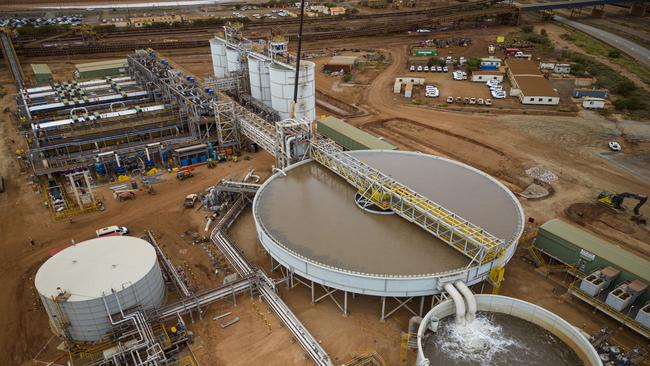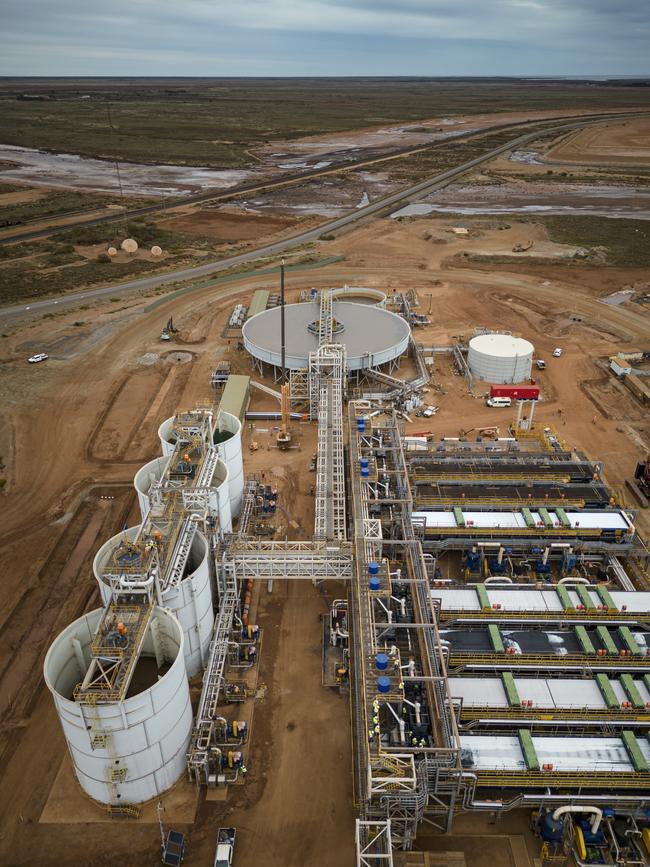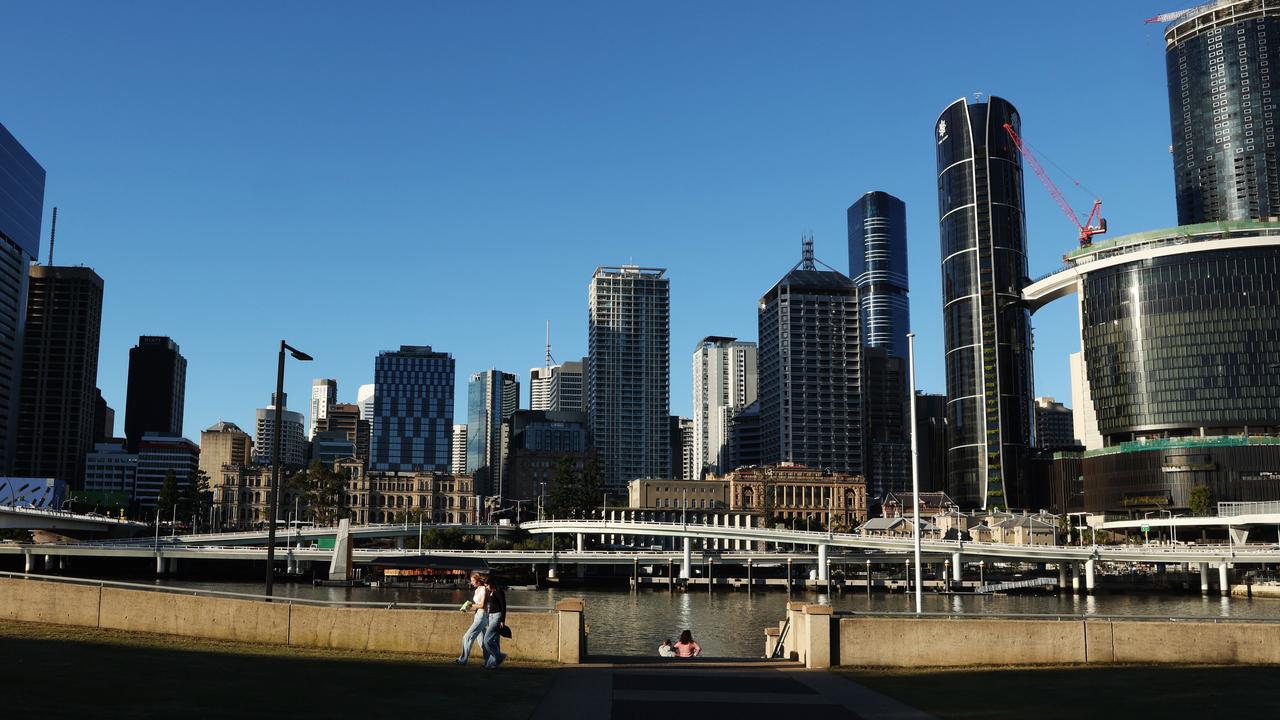Fortescue’s Iron Bridge woes continue with export guidance miss
Fortescue’s green energy arm will still cost the company more than $1bn in running costs this financial year, despite the sweeping wave of cuts that will see it shed about 700 jobs.

Business
Don't miss out on the headlines from Business. Followed categories will be added to My News.
Fortescue’s green energy arm will still cost the company more than $1bn in running costs this financial year, despite the sweeping wave of cost cutting that will see the company shed about 700 jobs.
Shares in the iron ore major dived more than 5.5 per cent on Thursday after the company missed the bottom end of its annual iron ore production guidance, despite shipping a record 53.7 million tonnes of iron ore in the June quarter, with the miner’s troubled Iron Bridge magnetite project again falling short of expectations.
But despite last week backing away from the most ambitious of its green hydrogen targets, the company said it will still spend $US700m ($1.07bn) on running its Fortescue Energy arm, plus another $US500m in capital costs as it begins work on its first suite of small green hydrogen production centres.
Fortescue, which is currently running a redundancy program that will see the company shed about 700 positions, said on Wednesday it had shipped 191.6 million tonnes for the full financial year, beneath the 192 to 197 million tonne guidance.
The company was badly hit by a train derailment over the Christmas period, and recovered to close on its annual guidance target by shipping a far larger proportion of lower grade products – known as Super Special Fines – in the June quarter than it would normally sell into the market. Fortescue shipped 78.1 million tonnes of the product in the full year, up from 68.3 million tonnes in the 20023 financial year.
Fortescue also flagged a further potential slippage in exports for the current fiscal period, saying it expected to export 190 to 200 million tonnes for the year.
Its traditional dig and ship operations exported 190.4 million tonnes for the year ended June 30, with Iron Bridge moving 1.2 million tonnes of concentrate – well below the revised 2 million tonne expectation.
The company said Iron Bridge shipments were affected by “higher than plan concentrate moisture affecting material handling”.
Fortescue says those issues are now largely solved, and the company is working towards an alternative solution to the long-running water supply issues plaguing Iron Bridge, where the company has previously flagged the need to replace a length of pipeline to borefields that leaks when placed under high pressure.

The project is now “banking” rainfall and surface water, Fortescue said, an option that “may mitigate” the need to replace the high pressure section of the raw water pipeline.
Fortescue now expects Iron Bridge to produce 5 to 9 million tonnes of concentrate in the current fiscal year, with the massive mine still expected to hit its full capacity by September 2025.
Fortescue mining boss Dino Otranto said the new guidance range reflected shipping constraints at the company’s operations, and not any expectation output from Fortescue’s traditional hematite mines would slip during the year.
“For FY25 the bottleneck, as magnetite ramps up, becomes shipping and it does then give us flexibility to ramp up and down hematite and magnetite in that portfolio based on market conditions,” he told analysts on Thursday.
The company’s realised price for its iron ore also slipped in the quarter, as the disparity between higher and lower grade ores widened. Fortescue said it realised an average $US92.12 a tonne, or about 82 per cent of the benchmark index for iron ore grading 62 per cent iron.
In the March quarter, Fortescue sales averaged $US104.48 a tonne, or 85 per cent of the benchmark price. It received an average $US103.01 a tonne for the full year.
Fortescue said its cash costs averaged $US18.53 a tonne for the quarter, down slightly, and $US18.24 a tonne for the full year.
The mining major is flagging cost increases in the current year, however, with costs expected to run between $US18.50 to $US19.75 a wet metric tonne.
But despite the cost-cutting and restructuring at Fortescue, partly aimed at ending the duplication of support functions between its iron ore and energy arms, the company will accelerate spending on green energy projects.
Fortescue chief financial officer Apple Paget told analysts about a third of the planned $US500m capital spending on energy projects would go to the already approved green energy projects in the US, Queensland and WA, with another third allocated to Fortescue Zero – formerly known as WAE Technologies – which is looking to build high-technology manufacturing centres in the US and the UK.
About 60 per cent of Fortescue Energy’s $US700m operating spend would support the development of new green energy projects – including feasibility studies on green hydrogen projects in Norway and Brazil – with the rest allocated to Fortescue Zero, she said.
Fortescue shares closed down $1.18, or 5.5 per cent, at $20.14 on Thursday.
More Coverage
Originally published as Fortescue’s Iron Bridge woes continue with export guidance miss





